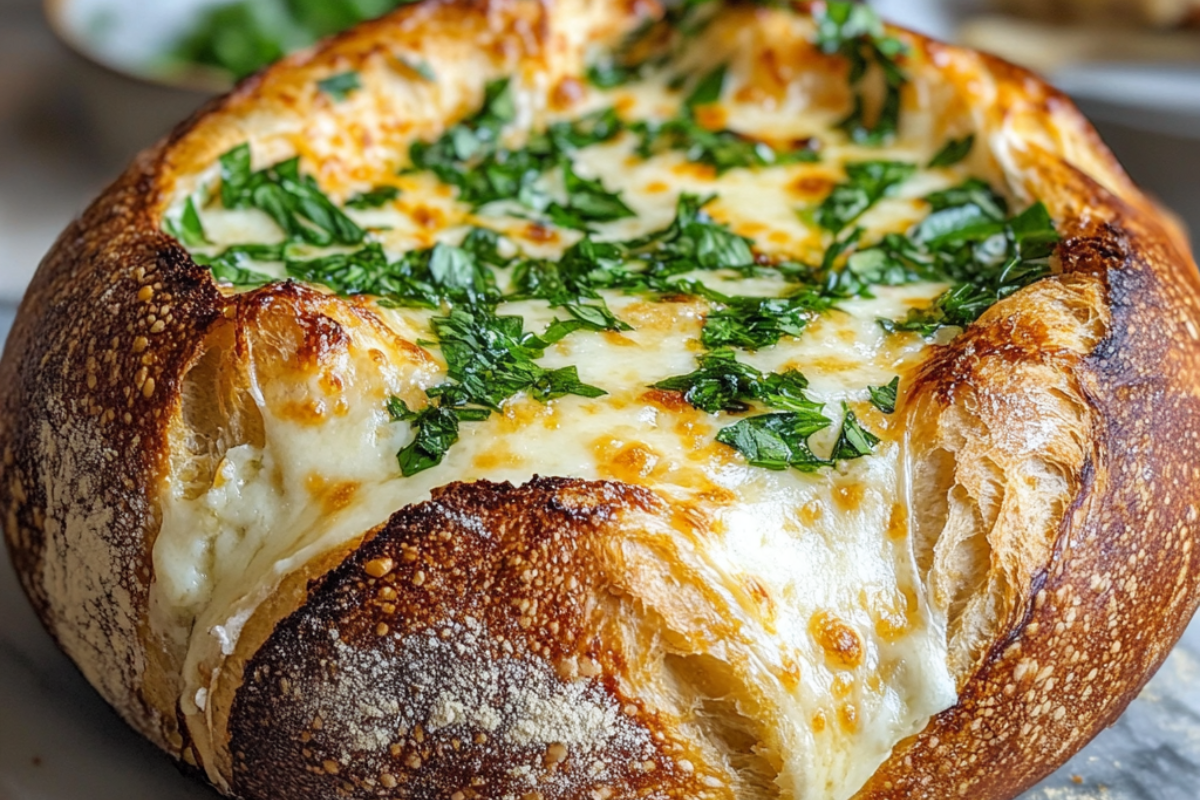A warm, hearty soup in a sourdough bread bowl is a beautiful way to turn a regular meal into something extraordinary. These crusty, chewy bowls add flavor and a rustic and comforting touch to your table. In this article, we’ll guide you through makiwe’llur’s sourdough bread bowls from scratch and suggest how to incorporate them into various delicious meals.
Why Sourdough for Bread Bowls?
Sourdough bread is an excellent choice for bread bowls because it holds its shape while offering a chewy and slightly tangy taste. The natural fermentation process results in a complex flavor that perfectly complements savory soups. Additionally, the crusty exterior ensures your soup doesn’t make the bread soggydoesn’tsoggy or ticklynew to baking sourdough; you can start by learning how to create and maintain your sourdough if you’re unsure about the process; out our in-depth guide on making the most of sourdough discard, a great resource for beginners.
Essential Ingredients and Tools
Here’s what you’ll need to mHere’sur so here’s bowls:
- Sourdough starter: The backbone of the bread, it adds the leavening and characteristic sourdough flavor.
- Bread flour: High-protein flour is essential for the chewiness of the bread.
- Water and salt: Simple but crucial ingredients.
- Optional: Whole wheat flour can be added for a more rustic flavor.
You’ll also need basic toolsYou’ll as a Dutch oven or baking stone, a kitchen scale for accurate measurements, and a sharp knife for scoring your dough. If you want to experiment with different recipes, try making our easy sourdough scones, which require similar ingredients and techniques.
Step-by-Step Guide to Making Sourdough Bread Bowls
1. Create and Maintain Your Sourdough Starter
Start by ensuring your sourdough starter is active and bubbly if you’re new to the process, have a leftover starter, or are going to use it in our comprehensive guide on sourdough discard recipes.
2. Mix and Ferment the Dough
- Combine your sourdough starter, bread flour, water, and salt in a large bowl.
- Knead the dough or use the stretch-and-fold technique during the bulk fermentation process.
- Allow the dough to rise for several hours.
During fermentation, the sourdough develops its signature flavor and texture.
3. Shape and Proof
Once your dough has risen, divide it into portions and shape them into round loaves. Place these on parchment paper or in proofing baskets for a final rise. Our article on how to avoid common scone mistakes offers more tips on working with dough, which also applies to other types of bread.
4. Score and Bake
Preheat your oven to 450°F (230°C). Score the dough before baking to allow for proper expansion. Bake your bread bowls in a Dutch oven or on a baking stone for 25-30 minutes until they’re golden brown and cruthey’rerving Suggestions for Sourdough Bread Bowls
Your sourdough bread bowls are perfect for hearty soups like clam chowder, broccoli cheddar, or stews. They also work well with dips, such as spinach-artichoke or cheese fondue. For inspiration on what to serve, check out our guide on chicken and sausage gumbo—another comforting dish that could benefit from being served in a bread bowl.
FAQs
How long does it take to make sourdough bread bowls?
From start to finish, it typically takes 8-12 hours, factoring in fermentation and proofing time.
Can I freeze sourdough bread bowls?
Yes, bake them as usual and freeze them in an airtight container. Reheat in the oven before serving.
How do I prevent the bread from becoming soggy?
Line the inside of the bread bowl with a thin layer of melted butter or cheese to create a barrier between the bread and the soup.
Making sourdough bread bowls from scratch adds flavor and texture to your meals. You can elevate your soups with just a few ingredients and tools, youths, and dips with just a few ingredients’ll have beautifully crusyou’llad bowls that cacrusyou’ lladdinary dinner into something special. For more recipes and ideas, check out our collection of cottage cheese recipes, perfect for pairing with various meals.
